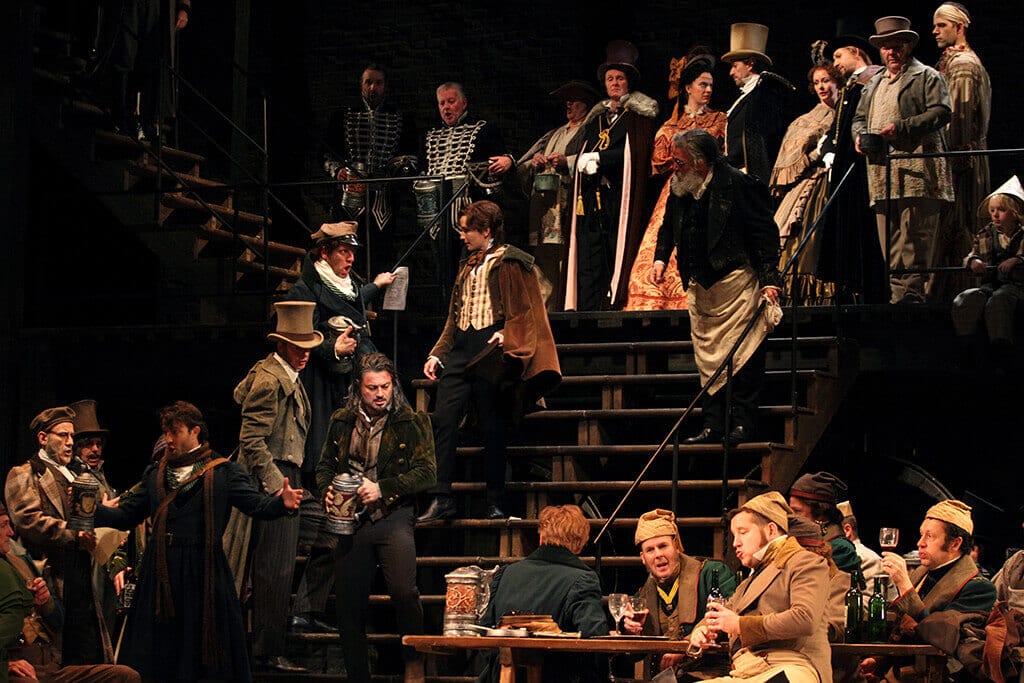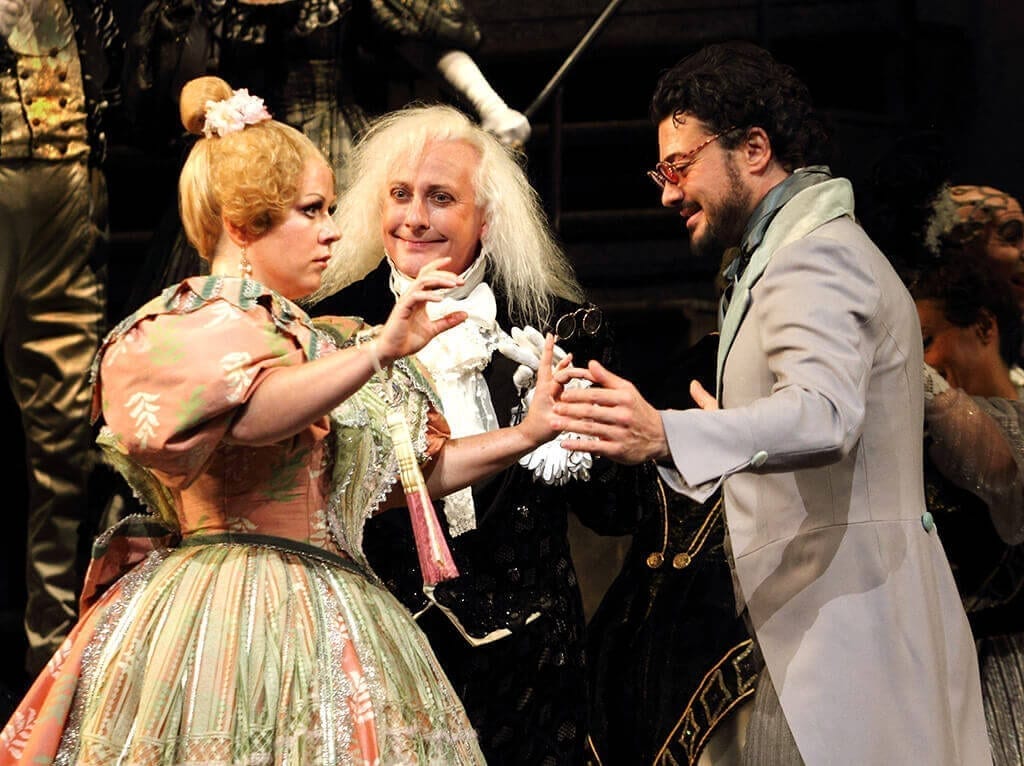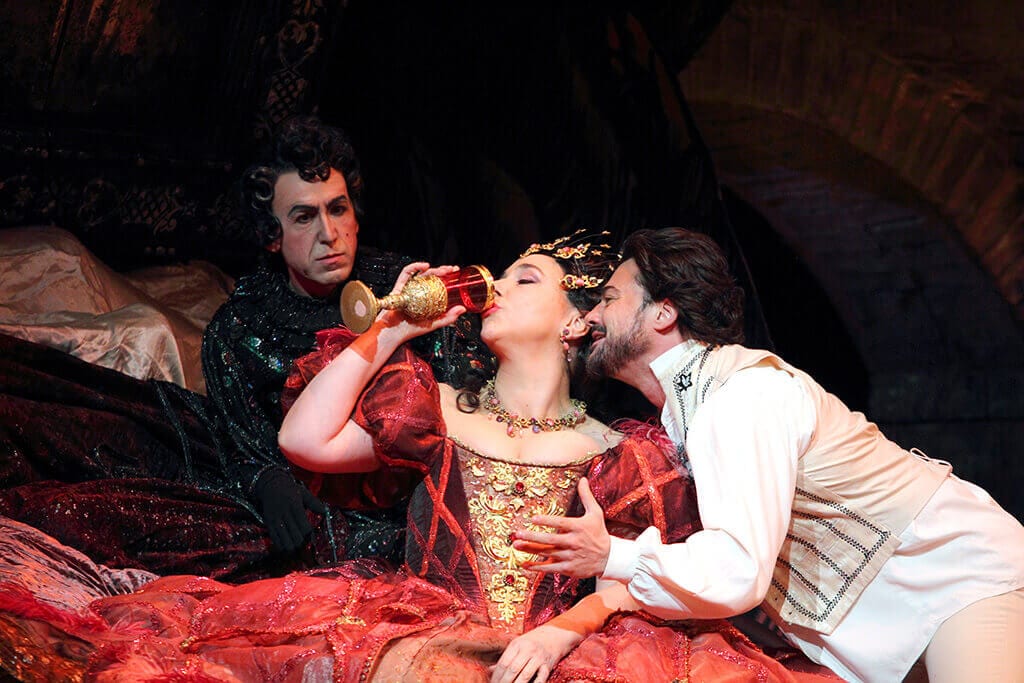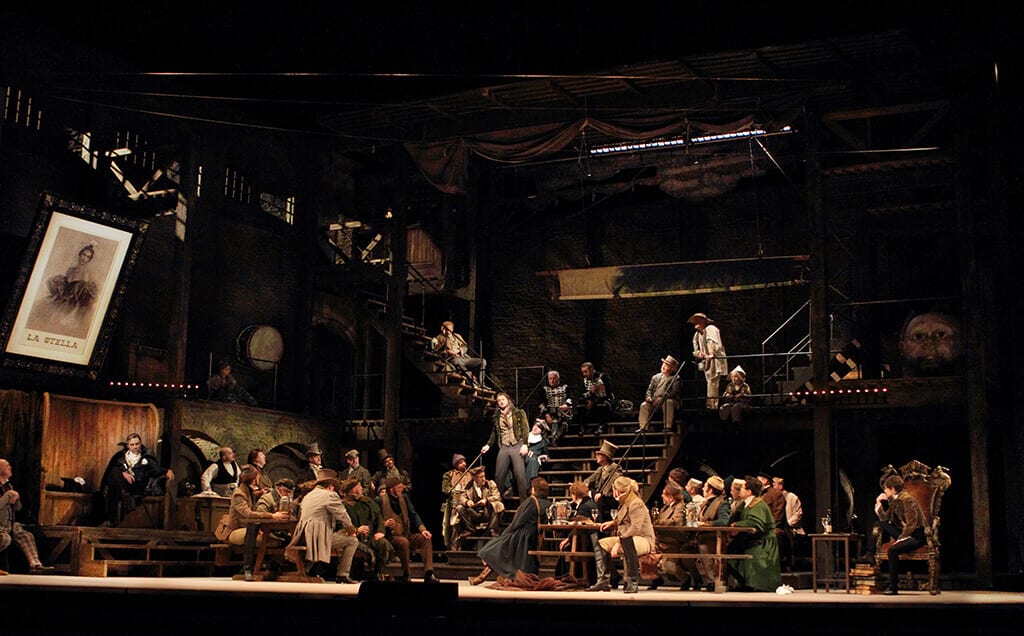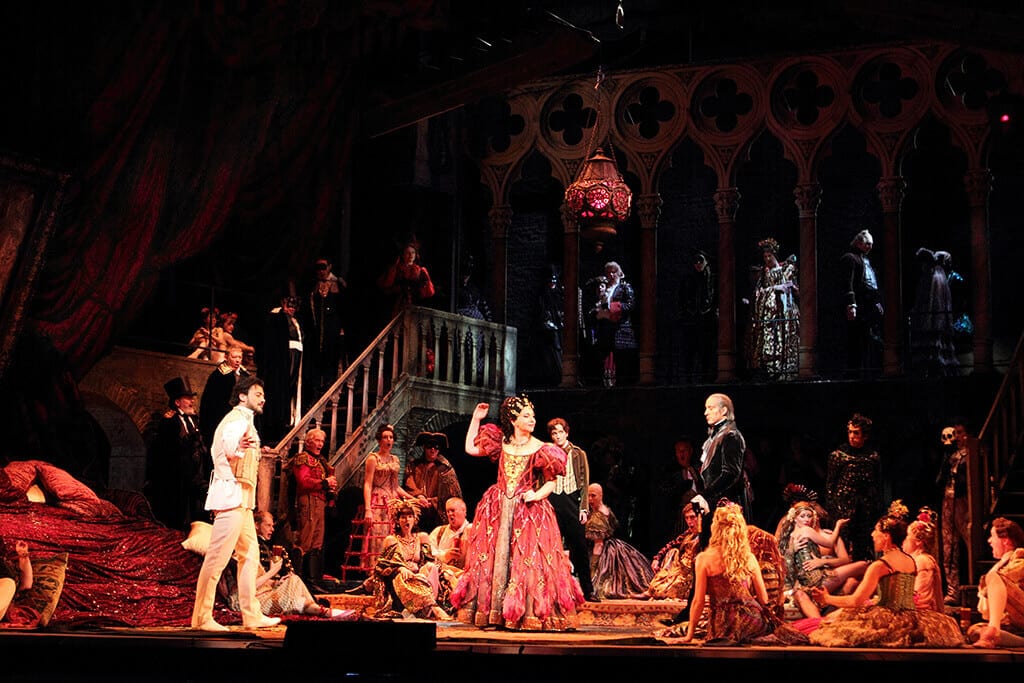John Schlesinger’s original production with William Dudley’s lavish sets and Maria Björnson’s exquisite costumes, provide an inspired backdrop to the unfolding dramas of fantastic romanticism crippled by doomed love imbedded, loosely, in the three bizarre and morbidly surreal tales by E.T.A. Hoffmann.
This revival of the 1980s production of Offenbach’s unfinished opera, where repeated theme and duplicated situation enrich the dramatic effect, does not move beyond the boundaries of a three star rating despite being performed by a renowned cast of singers and superb female cast.
The intensely deep sounds generated when the drama turns fraught are drowned out in the prologue and the first two acts – Paris and Venice. There is greater emphasis on the beguiling mellifluous elements of the musical score that helped earn the opera its popularity. Under the baton of Evelino Pidò the orchestra struggled to reach the intensity, profundity and lustrous sound that should be expected of it.
The opera consists of three acts sandwiched between a prologue and epilogue.
Hoffmann (Vittorio Grigòlo), inebriated poet and storyteller, misses a performance of the second half of Don Giovanni and a rendezvous with the diva, Stella (Olga Sabadoch), when reliving his disastrous love affairs. In fact his tales are His nemesis, Lindorf (Thomas Hampson), reappears in disguises in each and every account of Hoffmann’s affairs, leaving the poet devastated and disillusioned. Hoffmann’s muse, later disguised as his friend Nicklausse, (Kate Lindsey), attempts to guide and warn Hoffmann, but falls on deaf ears.
Olympia, a superbly crafted life-like doll, is Sofia Fomina’s debut role. She deftly handles high notes and aptly performed her part. The French tenor, Christophe Mortagne’s Spalanzani, the eccentric inventor and creator of Olympia, articulates French lyric refinement with matching theatrical performance.
Christine Rice, the English mezzo-soprano, sings Giulletta, the Venetian courtesan and diamond-digger. Her warm, textured voice is suited to the part, but the dramatic performance of all concerned in this scene is detrimental to the work as a whole. Had it been left out as was the case in the first production of the opera in 1881, the performance would have been more enjoyable.
The redeeming act is the last, which is set at Crespel’s house in Munich, where Crespel (Eric Halfvarson) has fled with his daughter Antonia to protect her from her lover, Hoffmann. Although she has a voice of an angel and Hoffmann encourages her to sing, unbeknown to both, she thereby shortens her life. All performers in the Antonia scene ride high vocally and dramatically.
Vittorio Grigòlo’s challenging role as Hoffmann, an artist in love with a fellow artist, is sublime. He gives a compelling vocal and emotionally rich account of the character. The Bulgarian soprano, Sonya Yoncheva’s Antonia breathes life into the part. Her lustrous and velvety, ample, voice, beautifully conveys the passion for music and love for Hoffmann. Yoncheva sings with clarity and authority, yet she conveys the vulnerability and determination of her character.
The excellent Catherine Carby as Antonia’s mother, Eric Halfvarson as her protective father, Crespel together with the exquisite Vincent Ordonneau deserve credit for supporting an all-round, near perfect Act.
Thomas Hampson, portrayal of all four villains in the opera may look and act the part but he does not sound it. The singer’s voice is not robust and lacks the consummate French style to enhance the character of the four devilish villains.
Kate Lindsay is magnificent as the Muse and Nicklausse. Her near constant presence on stage desperately trying to avert Hoffmann from his disastrous paths is strong. She is given two extra grand solos – the “violin” aria in the Antonia act and another in the epilogue. And her part in the Barcarolle is splendidly sung.
This production could be greatly improved if the conductor is able to instil more vigour and feeling into the music.

